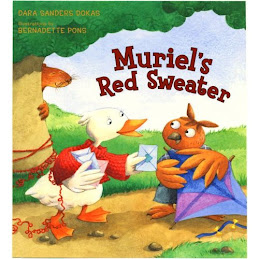
Here's a big question: Should you use rhyme in your picture book?
There are some excellent picture books that rhyme. These books tend to be either books for very young children or poetry for children. Some of my personal rhyming favorites include BARNYARD DANCE by Sandra Boynton, GOODNIGHT MOON by Margaret Wise Brown, and my recent poetry favorite, STAMPEDE: POEMS THAT CELEBRATE THE WILD SIDE OF SCHOOL by Laura Purdie Salas.
There are also excellent poetry books and books for young children that do not rhyme. Two of my favorites are OWL BABIES by Martin Waddell and LITTLE DOG POEMS by Kristine O'Connell George.
While there are books published every year that rhyme, the VAST majority of books published for children do not rhyme.
Why is that?
- Rhyme is very difficult to do well.
• I have read many manuscripts (including my own) that use near-rhyme that doesn't work, sentence construction that is mangled to fit in a rhyming word, goofy made-up words that don't make sense, and cliched word combos (think "bed" and "head".)
- Rhyme doesn't usually work well for older picture books.
• In my opinion, any time you are telling a story vs. writing a concept-type book, the story is best told in good old prose. Stories in rhyme tend to fall flat.
- Rhyme is limiting.
• Authors, especially beginning ones, become constricted by the rhyme instead of telling the full story they have to tell.
So should I dump my rhyming picture book manuscript? Not necessarily. I recommend doing the following things first:
- Ask yourself what age child you are writing for? If it's for babies or preschoolers, maybe rhyme will work.
- Are you a poet? There is distinction between people who write in rhyme and poets who use rhyme. I, for one, find that writing good poetry (especially in rhyme) very difficult.
- Try writing your story in prose. Compare the two versions. Which works best? Which tells the complete story?
- Read your rhyming story out loud. Or, better yet, have someone else read it out loud to you. Notice where the reader stumbles. Notice awkward sentences or rhymes that sound off.
- Have trusted writer friends read your story. Ask for a critique. What works? What doesn't?
Then, you can decide if your story works best in rhyme or in prose!
P.S. There is a difference between rhyme and rhythm. Picture books that have rhythm can be wonderful. They often bounce along with a musical-type cadence. A book does not have to rhyme to have rhythm. But, this is definitely a new blog topic.


Sometime I like to rhyme
ReplyDeletebut don't know what to do
So I argue with myself
and decide just to haiku.
Nina, I love it!
ReplyDeleteIt was SO great to see you again on Saturday!
ReplyDeletep.s. glad you liked my pome! ;)
Thanks, Dara!
ReplyDeleteAnd great advice on the rhyming picture books. So hard to do well...